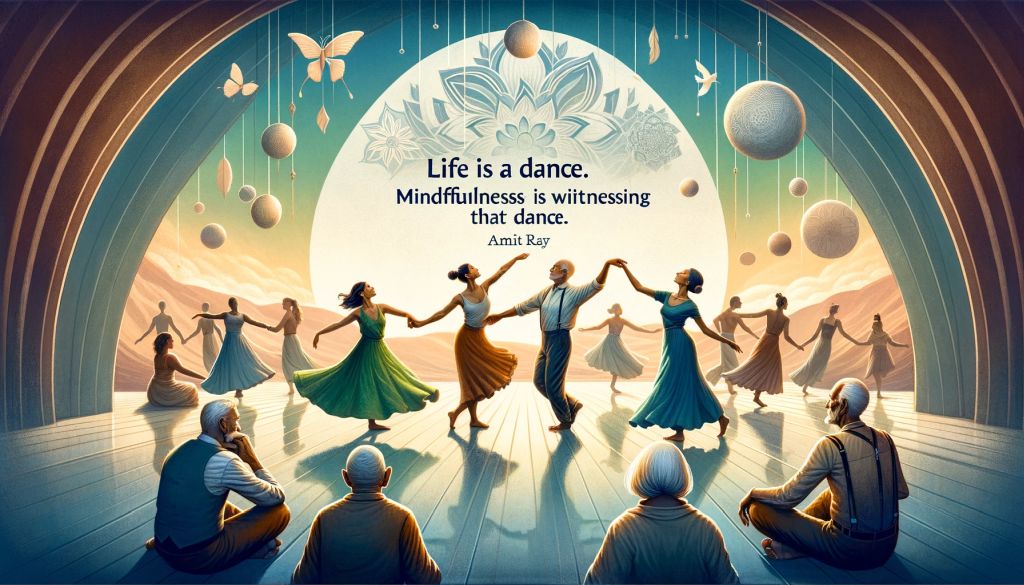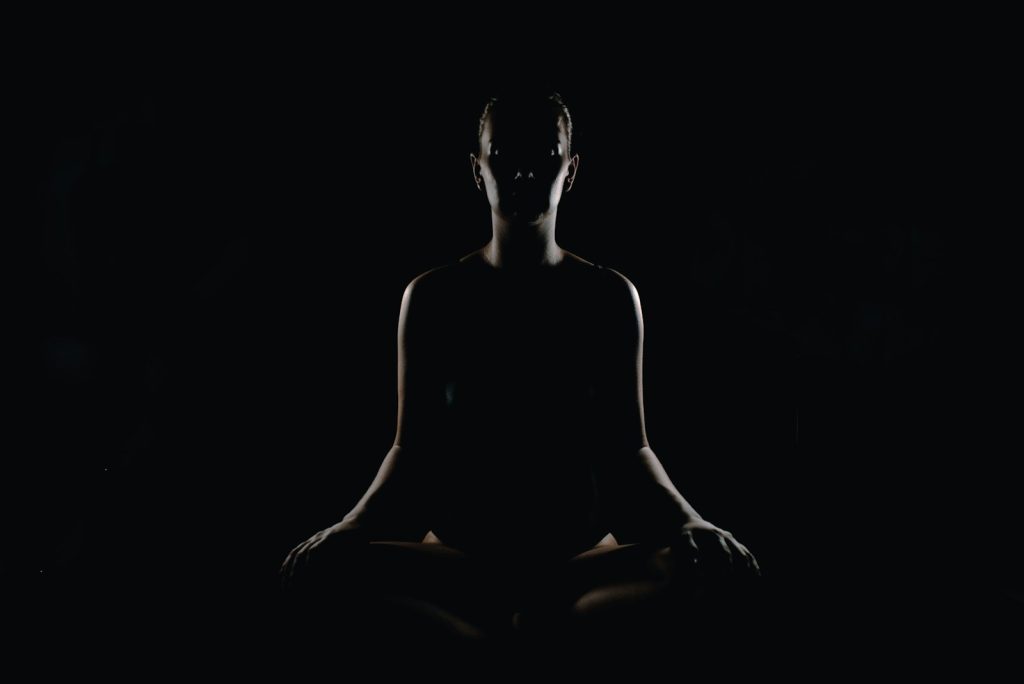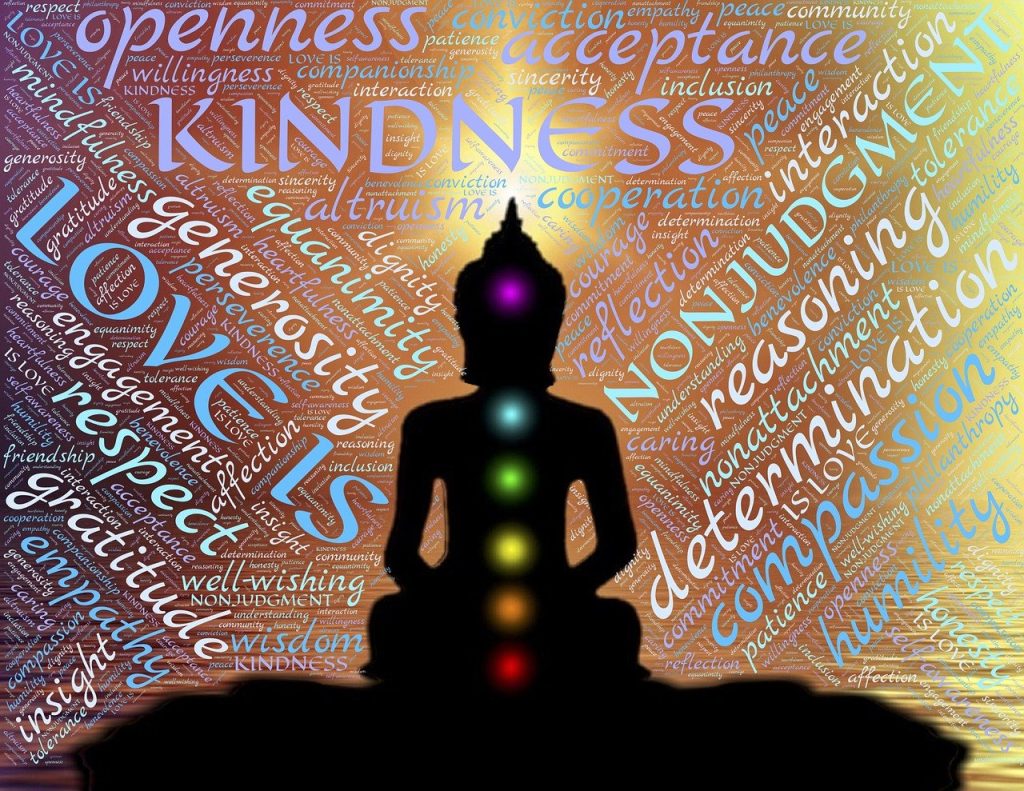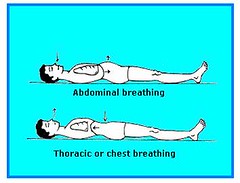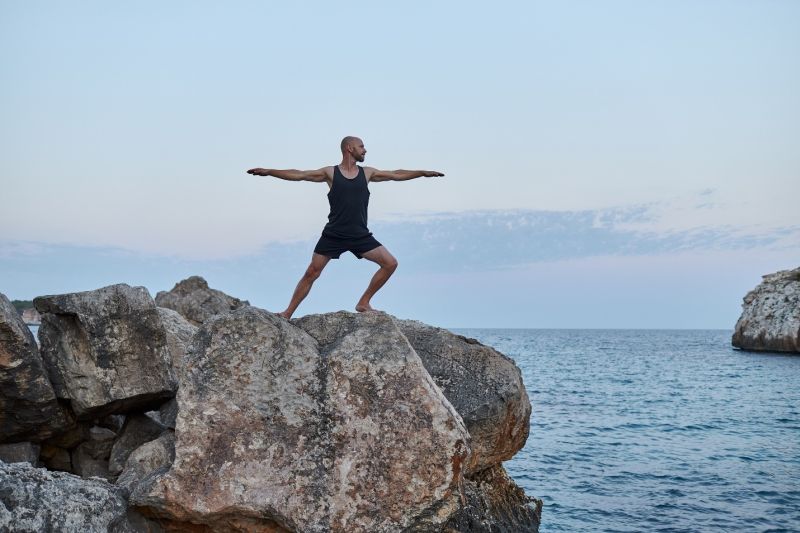
by Elizabeth Redd | Feb 15, 2024 | Holistic Living, Mindfulness, Natural Remedies
The concept of the holistic way is not confined to a single country or culture. Embracing a holistic approach to health means recognizing that our well-being is influenced by the interconnection between our physical, mental, emotional, and spiritual states. This approach transcends geographical boundaries and can be traced back to ancient civilizations across the globe. From the Ayurvedic traditions of India to the indigenous healing practices of Native Americans, the holistic way has been a fundamental aspect of various cultures’ approach to health and wellness.
For instance, Traditional Chinese Medicine (TCM) with its deep roots in China, emphasizes the balance of Qi, the vital life force, as essential for good health. Similarly, the Greek philosophy of balancing the four humors influenced European medical practices for centuries. In Africa, traditional healers have long used herbs and spiritual rituals to treat the whole person. These diverse practices, although varying in methodology and philosophy, all share a common thread – the belief that health is a state of complete harmony and not merely the absence of disease.
As we delve into the holistic way from which country it originated, it becomes clear that this is not a concept owned by one nation but rather a collective wisdom shared by many. It’s a testament to the interconnectedness of human knowledge and the universal desire for harmony and balance in life.
Ready to kickstart your wellness journey? Sign up for our content to receive exclusive tips and updates. Take the first step towards a healthier, happier you! Join Our Community Today!
Tracing Holistic Health: Ancient Civilizations and Practices
The holistic way of health can be traced back to several ancient civilizations that laid the groundwork for today’s holistic practices. In India, Ayurveda, which literally translates to ‘the science of life,’ began over 5,000 years ago and is still practiced today. It is based on the belief that health and wellness depend on a delicate balance between the mind, body, and spirit, and it employs natural treatments, diet, exercise, and lifestyle changes.
In China, Traditional Chinese Medicine (TCM) developed around 3,000 years ago and incorporates herbal medicine, acupuncture, and tai chi to maintain harmony within the body and with the outside world. The concept of Yin and Yang – opposing forces that are interconnected and interdependent – is central to TCM’s understanding of health.
Similarly, ancient Egyptians are known for their use of herbal medicine and spiritual healing, often invoking deities in their quest for health. The Greeks, led by figures such as Hippocrates, often referred to as the ‘Father of Medicine,’ also emphasized the importance of environmental factors and balanced diets to prevent and cure diseases.
Across the Atlantic, Native American healing practices are deeply rooted in a spiritual understanding of life and the belief in a strong connection between health and harmony with nature. These practices often involve herbal remedies, purification rituals, and the guidance of healers known as shamans.
Each of these ancient systems reflects a deep understanding of the holistic way, recognizing that our health is affected by more than just physical symptoms. They highlight the importance of balance and integration in the pursuit of health and wellness, principles that are still relevant and revered in holistic health circles today.
The Birthplace of Holistic Medicine: Uncovering the Origins

Uncovering the birthplace of holistic medicine is akin to a journey through time and across cultures. While it is challenging to pinpoint a single origin due to the parallel development of holistic practices globally, many agree that the holistic way from which country question often leads us to the ancient subcontinent of India. Here, Ayurveda, the earliest formal system embodying the principles of holistic health, was conceptualized. The Vedas, ancient Indian texts, contain some of the first recorded notions of holistic health, emphasizing the interconnectedness of the body, mind, and spirit.
However, holistic medicine’s roots are not confined to a single region. In various forms, it has been an integral part of many indigenous cultures, from the Aboriginal peoples of Australia who engaged in spiritual healing practices to the African tribes that used traditional herbal remedies and community healing rituals.
The traditional Greek philosophy of balancing the ‘four humors’ also reflects holistic principles, suggesting that maintaining the right balance of blood, phlegm, black bile, and yellow bile is essential for good health. This belief permeated throughout the Mediterranean and influenced the development of Western medicine.
Historically, these disparate practices were not known as ‘holistic medicine’ per se, but they all shared a common understanding of treating the individual as a whole rather than focusing solely on the disease. It is this foundational belief that has carried through the ages, leading to the contemporary holistic health movement that integrates traditional wisdom with modern knowledge to promote healing and wellness.
Cross-Cultural Contributions to Holistic Health

The tapestry of holistic health is rich with the threads of numerous traditions and practices from around the world, each contributing its own unique patterns to the form we know today. It is a practice that transcends borders and eras, weaving together the wisdom of countless cultures in pursuit of complete well-being.
From the Native American healing rituals that emphasize a deep connection with nature and spirit, to the Chinese philosophy of balancing the body’s Qi through acupuncture and Tai Chi, holistic health is a true mosaic of global insights. The Chinese contribution, Traditional Chinese Medicine (TCM), is one of the most well-known systems, with its fundamental belief in the Yin and Yang energies and the five elements that govern the human body and its environment.
In the Middle East, Unani medicine, a system based on the teachings of Hippocrates and Galen, flourished. It, too, focuses on the balance of elements within the body and uses natural remedies, such as herbs and minerals, to treat patients holistically.
In Europe, during the Renaissance, a renewed interest in ancient Greek and Roman medical texts led to the integration of holistic concepts with emerging scientific thought. The holistic approach was overshadowed somewhat by the rise of allopathic medicine during the 19th century, but it never disappeared. In fact, it continued to be practiced and evolved alongside conventional methods.
Furthermore, the African continent’s contribution through its myriad of tribal healing traditions, which include spiritual healing, herbalism, and community-based practices, reminds us that holistic health is as diverse as it is ancient.
Understanding these cross-cultural contributions is essential. They not only provide historical context but also offer a variety of tools and perspectives that can be integrated into modern holistic practices, allowing for a more inclusive and comprehensive approach to health and healing.
Modern Holistic Movements: Global Synthesis and Evolution

The evolution of holistic health continues to flourish in the modern era, with a global synthesis of traditional practices and contemporary scientific understanding. As the world becomes more interconnected, the exchange of knowledge accelerates, allowing for an unprecedented integration of ancient wisdom and innovative health modalities.
In recent decades, there has been a significant resurgence in the demand for holistic approaches to health and wellness. This has been driven by a growing dissatisfaction with the limitations of conventional medicine, particularly its focus on symptom management rather than addressing the root causes of illness. In response, modern holistic movements are increasingly embracing a more integrated approach that considers the physical, emotional, mental, and spiritual aspects of an individual.
Yoga and meditation have seen a meteoric rise in popularity across the Western world, with their roots in ancient Indian philosophy. Mindfulness practices, which have origins in Buddhist traditions, have been widely adopted in psychological therapies to help manage stress and improve mental health outcomes.
Naturopathy, which combines natural remedies with modern diagnostics, is another example of how traditional and modern practices are being synthesized. Similarly, functional medicine, a systems biology-based approach that aims to identify and address the root causes of disease, exemplifies the modern holistic movement’s drive towards a more patient-centered and preventative approach to health care.
The surge in popularity of organic foods, the use of essential oils, and the resurgence of interest in herbal remedies all signal a collective shift towards embracing a more holistic way of living. This modern holistic movement is not just a return to ancient practices, but an evolution that adapts and integrates these traditions with contemporary life, creating a more balanced and sustainable approach to health that is accessible to people across the globe.
Holistic Health Today: A Blend of Traditions and Innovations

Today’s holistic health landscape is a vibrant tapestry woven from the various threads of traditional practices and cutting-edge innovations. As societies progress and healthcare evolves, the holistic approach adapts, forming a unique blend that is both timeless and timely.
The holistic way is now characterized by its inclusivity and diversity, embracing techniques from across the world. Acupuncture and traditional Chinese medicine, Ayurveda, Reiki, and countless other practices coexist with modern nutritional science, biofeedback, and genomics. This confluence is evidence of a collective yearning for a more comprehensive, personalized form of healthcare—one that empowers individuals to take charge of their wellbeing and promotes balance in all facets of life.
Technological advancements have played a significant role in this evolution. Wearable health devices, fitness trackers, and mobile health apps provide data that can be used to tailor wellness regimens to the individual’s unique needs. Likewise, telemedicine and online wellness platforms offer greater access to holistic health resources, making it possible for anyone with an internet connection to learn about and implement holistic practices.
As we witness the continuous blending of traditions with innovations, it becomes clear that the holistic way is not static; it is a living, breathing philosophy that grows and changes to meet the needs of each new generation. It is a journey of self-discovery and healing, one that invites us to explore the depths of our being and the breadth of the world’s healing modalities.
Ready to kickstart your wellness journey? Sign up for our content to receive exclusive tips and updates. Take the first step towards a healthier, happier you! Join Our Community Today.!

by Elizabeth Redd | Feb 15, 2024 | Holistic Living, Mindfulness, Natural Remedies
Embarking on a journey toward holistic health can be both enlightening and empowering. Alternative medicine, a term that encompasses a myriad of non-conventional healing practices, aims to treat the whole person – mind, body, and spirit. Unlike traditional medicine, which often focuses on alleviating symptoms, alternative medicine seeks to address the root causes of health issues, fostering a deep sense of well-being and balance.
From acupuncture and aromatherapy to herbal remedies and mindfulness meditation, alternative medicine practices offer a diverse range of options for those seeking a more integrative approach to health care. These practices often draw on ancient wisdom and may be used alongside conventional treatments to enhance overall health. For many, finding “alternative medicine practices near me” is a critical step towards embracing a lifestyle that prioritizes natural and preventative care.
Ready to kickstart your wellness journey? Sign up for our content to receive exclusive tips and updates. Take the first step towards a healthier, happier you! Join Our Community Today.!
As people increasingly recognize the interconnectedness of their physical, emotional, and spiritual health, the demand for alternative medicine continues to grow. By exploring these practices, individuals can discover personalized paths to healing that resonate with their unique needs and philosophies. It’s a transformative process that not only helps to alleviate ailments but also enhances one’s capacity for joy, energy, and resilience.
Key Benefits of Alternative Medicine Therapies

Alternative medicine therapies offer a myriad of benefits that contribute to a person’s overall well-being and can be a pivotal aspect of a holistic health regime. One significant advantage is the emphasis on prevention and the maintenance of health rather than merely treating disease. By focusing on lifestyle changes, nutrition, and stress reduction, these therapies can help to prevent illness from occurring or reoccurring.
Another key benefit lies in the personalized care that practitioners of alternative medicine provide. Treatments are often customized to the individual, taking into account not just their symptoms but also their lifestyle, emotional state, and overall health. This tailored approach ensures that the therapy aligns with the patient’s unique health needs and personal wellness goals.
Many alternative therapies also promote self-empowerment. Patients are encouraged to take an active role in their healing process, learning techniques and strategies to improve their health that they can use throughout their lives. This enhances self-awareness and gives individuals the tools they need to take control of their well-being.
Furthermore, alternative medicine often offers fewer side effects than conventional medicine. Natural remedies and holistic treatments are generally less invasive and use substances that are closer to their natural state, which the body is more likely to tolerate well.
Lastly, the integration of mind, body, and spirit in therapy sessions can lead to improved mental health. Techniques such as meditation, yoga, and tai chi can reduce stress and anxiety, leading to better sleep, more energy, and a more positive outlook on life. By addressing the mental and emotional aspects of health, alternative medicine can contribute to a happier and more balanced life.
Discovering Local Alternative Medicine Practitioners

Discovering local alternative medicine practitioners can be a transformative step in your journey towards holistic health. A great starting point is to conduct an online search for ‘alternative medicine practices near me’, which can yield immediate results tailored to your geographic location. Utilize search engines and dedicated directories that focus on holistic health to find a list of nearby providers.
Another effective method is to ask for recommendations from friends, family, or healthcare professionals who understand your health philosophy and may know reputable practitioners. Personal referrals can provide invaluable insights into the quality of care and the effectiveness of treatments offered by these professionals.
Social media platforms and local online forums are also excellent resources. Many practitioners maintain an active presence online, sharing information about their services, client testimonials, and educational content. Engaging with these pages can give you a sense of the practitioner’s expertise and approach to care.
Once you have a list of potential practitioners, it’s essential to research their credentials, experience, and reviews. Look for practitioners with proper certifications and training in their specific area of alternative medicine. Reading reviews and testimonials can help gauge the satisfaction of their current and past clients.
Before making a final decision, consider scheduling a consultation to discuss your health concerns and goals. This meeting is crucial for understanding the practitioner’s approach and determining if it aligns with your values and expectations. A face-to-face interaction can also help build trust and rapport, which are fundamental for a successful therapeutic relationship.
Types of Alternative Medicine Modalities Nearby
Exploring the types of alternative medicine modalities nearby can offer a myriad of options for individuals seeking to complement or replace conventional treatments. One common modality is acupuncture, an ancient Chinese practice that involves inserting thin needles into specific points on the body to restore balance and promote healing.
Naturopathy, another prevalent form of alternative medicine, emphasizes the body’s innate ability to heal itself. Naturopathic practitioners often use a variety of therapies such as nutritional counseling, herbal medicine, and homeopathy to treat patients.
Chiropractic care focuses on diagnosing and treating musculoskeletal problems, primarily through manual adjustment or manipulation of the spine. It is widely used to alleviate back pain, neck pain, and headaches.
For those seeking a more mind-body oriented approach, yoga and meditation classes can be found in most local wellness centers. These practices are designed to improve flexibility, strength, and mental clarity through poses and mindful breathing exercises.
Another holistic modality gaining popularity is energy healing, which includes practices like Reiki or qigong. These therapies are based on the concept of manipulating the body’s energy flow to promote healing and well-being.
When searching for ‘alternative medicine practices near me,’ it’s important to consider which type of modality aligns best with your personal health goals and preferences. Each practice offers unique benefits, and some may be more suited to your needs than others. Researching and experiencing different modalities can be a rewarding process as you discover what works best for your mind, body, and spirit.
Evaluating and Choosing the Right Practitioner

Selecting the right practitioner is a crucial step in your alternative medicine journey. It is essential to evaluate the credentials and experience of any potential practitioner. Look for certifications or licenses in their specific modality, which indicate that they have undergone the necessary training to provide safe and effective care.
One should also consider the practitioner’s approach to treatment. A good practitioner will view you as a whole person, not just a set of symptoms to be treated. They should be willing to work with you to develop a personalized treatment plan that aligns with your health goals and preferences.
It’s also beneficial to read reviews and testimonials from other patients. These can provide valuable insights into the practitioner’s style, effectiveness, and how they interact with clients. Personal recommendations from friends or family members who have had a positive experience can also be incredibly helpful.
Don’t hesitate to schedule a consultation with the practitioner to discuss your health concerns and ask any questions you may have. This meeting can give you a sense of their expertise and whether you feel comfortable with their approach. Trust your intuition; it’s important that you feel at ease and have confidence in your practitioner’s ability to assist you on your path to wellness.
Lastly, consider the location and availability of the practitioner. While finding ‘alternative medicine practices near me’ is convenient, it’s also worth traveling a bit further if it means connecting with a practitioner who is better suited to your needs. Ensure that their office hours are compatible with your schedule to maintain consistency in your treatment plan.
Integrating Alternative Therapies into Your Wellness Routine

Embarking on a path toward holistic health can be a transformative experience when you integrate alternative therapies into your wellness routine. Begin by identifying which practices resonate with you, whether it be acupuncture, herbal medicine, massage therapy, or another modality. It’s important to listen to your body and choose therapies that align with your personal health philosophies and goals.
Once you’ve selected a therapy to explore, start small. Integrate it into your routine in a way that is manageable and sustainable. For instance, you might begin with bi-weekly yoga classes or monthly visits to a naturopath. Gradually, as you become more accustomed to these practices and their effects on your body, you can adjust the frequency and variety of your alternative therapy sessions.
It’s also key to monitor how you feel before, during, and after each session. Keeping a wellness journal can help you track your progress and notice any changes in your physical or emotional well-being. This self-awareness can guide you in making informed decisions about continuing or adjusting your alternative therapy practices.
Remember that integrating alternative therapies is not about seeking an instantaneous cure but rather about nurturing a deep, ongoing connection with your health. As you explore different modalities, embrace the journey of learning what brings your body and mind into harmony.
Are you ready to kickstart your wellness journey? Join Our Community Today! Sign up for our content to receive exclusive tips and updates. Take the first step towards a healthier, happier you!
Finally, consider how alternative therapies can complement conventional medical treatments. Discuss your alternative therapy plans with your healthcare provider to ensure a coordinated approach to your health. With a balanced integration of alternative therapies, you can create a robust wellness routine that supports your journey to optimal health and happiness.

by Elizabeth Redd | Feb 14, 2024 | Holistic Living, Mental Health, Mindfulness
Welcome to the serene world of Vortex Meditation, a practice designed to harmonize the swirling energies of the mind and spirit. In our fast-paced society, the quest for tranquility can often seem elusive, making it vital to explore avenues that lead to inner peace. Vortex Meditation is one such path, offering a retreat from the chaos of everyday life.
But what is Vortex Meditation? It is a technique that involves visualizing a vortex of energy that sweeps away mental clutter, allowing for a state of deep relaxation and heightened awareness. This form of meditation draws upon the imagery of a swirling vortex to facilitate a profound connection between the self and the universe, encouraging a flow of positive energy and a sense of oneness with all that exists.
Ready to kickstart your wellness journey? Sign up for our content to receive exclusive tips and updates. Take the first step towards a healthier, happier you! Join Our Community Today.!
As we delve deeper into the practice of Vortex Meditation in this guide, you will learn how to utilize this powerful technique to soothe your mind, enhance your spiritual practice, and unlock a world of calm and clarity. Let’s embark on this transformative journey together, exploring the depths of our consciousness and the potential for profound healing and growth.
Understanding the Principles of Vortex Meditation
The foundational principles of Vortex Meditation are grounded in the understanding of energy flow and mindfulness. At its core, this practice is about creating a mental image of a vortex that acts as a conduit for cosmic energy, which helps to center the mind and facilitate a deeper state of meditation.
The first principle is the recognition of the energy centers within our bodies, often referred to as chakras. Vortex Meditation emphasizes the alignment and balance of these energy centers, enhancing the practitioner’s ability to channel energy effectively. The visualization of the vortex not only helps to clear blockages in these centers but also promotes the free flow of energy throughout the body.
The second principle involves the mindfulness aspect, where practitioners focus their attention on the present moment. This heightened state of awareness allows individuals to observe their thoughts without judgment, fostering a peaceful mental environment where stress and anxiety can dissipate.
The third principle is the cultivation of an intentional mindset. By setting intentions at the beginning of each session, practitioners can direct the meditation’s energy towards personal growth, healing, or whatever aspect of their life requires attention.
Together, these principles form a holistic approach to meditation that not only calms the mind but also empowers individuals to tap into their inner reservoir of energy and potential. As we continue to explore Vortex Meditation, we’ll uncover how these principles can be practically applied to enhance your meditation experience and support your journey towards a more balanced and harmonious state of being.
The Benefits of Vortex Meditation: Mind, Body, and Spirit

Vortex Meditation offers a myriad of benefits that extend across the mind, body, and spirit, creating a synergy that promotes overall well-being. By engaging in this form of meditation, individuals can expect to experience a reduction in stress and anxiety, as the practice encourages a state of deep relaxation. The focused breathing and visualization techniques help to lower cortisol levels, which are often elevated due to stress.
On a physical level, Vortex Meditation can lead to improved circulation and heart health. As practitioners visualize the energy flow within the vortex, their heart rate can stabilize, and blood pressure may decrease, contributing to cardiovascular well-being. Furthermore, by aligning the energy centers or chakras, the meditation can aid in alleviating various physical ailments, promoting faster healing and recovery.
Regarding mental health, individuals often report enhanced clarity of thought and focus after practicing Vortex Meditation. The meditative state allows for the quieting of mental chatter, which can sharpen cognitive functions and improve decision-making. This clarity can lead to increased productivity and an overall sense of mental acuity.
The spiritual aspects of Vortex Meditation are equally profound. Many practitioners feel a strong sense of connection to a higher power or the universe, which can lead to significant spiritual growth. This connection fosters a deeper understanding of oneself and one’s purpose in life, enhancing personal insight and enlightenment.
Through the regular practice of Vortex Meditation, the harmonizing effects on the mind, body, and spirit can lead to a more fulfilled and balanced life. The practice’s holistic impact is one of the key reasons it has become a cherished technique among those seeking a transformative path to inner peace and vitality.
How to Practice Vortex Meditation: Techniques and Tips

Embarking on the practice of Vortex Meditation requires understanding its core techniques and adopting certain tips to enhance the experience. One begins by finding a quiet, comfortable space, minimizing distractions to create an environment conducive to deep meditation. A seated position with the spine straight is often recommended, as it facilitates the flow of energy.
To initiate the meditation, focus on deep, rhythmic breathing. This helps to calm the mind and prepare the body for the energy work ahead. Visualization plays a pivotal role in Vortex Meditation; practitioners are encouraged to envision a swirling vortex of energy that encompasses their being, originating from the base of the spine and extending upwards through the crown of the head. This imagery helps to align the chakras and promote the free flow of energy throughout the body.
As you continue to breathe deeply, allow the imagined vortex to expand and intensify, feeling its rotation and the associated sensations in your body. The use of mantras or affirmations can further deepen the practice, as they provide a mental anchor and enhance the meditative state.
It’s important to remain patient and gentle with oneself, as mastering Vortex Meditation can take time. Beginners should start with shorter sessions, gradually increasing the duration as they become more comfortable with the technique. Consistency is key; regular practice yields the best results, allowing the mind and body to acclimate to the meditative state more readily over time.
Lastly, conclude each session with a period of reflection, slowly bringing awareness back to the physical surroundings. Acknowledge the peace and energy cultivated during the meditation, carrying that tranquility forward into daily life. With these techniques and tips, practitioners can effectively harness the benefits of Vortex Meditation, embarking on a transformative journey of self-discovery and healing.
Integrating Vortex Meditation into Your Daily Routine

Integrating Vortex Meditation into your daily life can be a seamless process with mindful planning and intention. To establish a consistent practice, it is beneficial to designate a specific time each day for meditation. Many find that early morning or late evening sessions align well with natural periods of quietude, though the optimal time will vary for each individual.
Creating a dedicated meditation space within your home can serve as a tangible reminder and an inviting environment for your practice. This space doesn’t need to be large or elaborate; a small corner with a comfortable seat and perhaps a few items that promote relaxation, such as candles or incense, can be quite effective.
For those with busy schedules, Vortex Meditation can be adapted to fit into shorter timeframes. Even five to ten minutes of focused meditation can yield significant benefits. Utilize moments of pause throughout the day—during a lunch break, after completing a task, or while waiting for an appointment—to engage in brief meditation sessions.
Incorporating Vortex Meditation into regular activities can also enhance its integration into your routine. Try practicing the techniques while engaging in gentle exercise, like walking or yoga, to further anchor this practice into your daily life. The key is to maintain awareness and intention, allowing the principles of Vortex Meditation to permeate your everyday actions and interactions.
Lastly, consider using technology to your advantage. Setting reminders on your phone or using a meditation app can provide structure and support as you build the habit. Over time, Vortex Meditation can become a natural and impactful part of your daily routine, promoting enhanced well-being, mental clarity, and an overall sense of balance in your life.
Vortex Meditation Success Stories: Transformative Experiences

Across the globe, individuals from various walks of life have experienced the transformative power of Vortex Meditation. These success stories often highlight profound personal growth, enhanced mindfulness, and a deeper connection to one’s inner self. One common thread in these accounts is the sense of peace and clarity that emerges from regular practice, illustrating the potential of Vortex Meditation to positively reshape one’s mental and emotional landscape.
For example, some practitioners recount breakthroughs in managing stress and anxiety, attributing their newfound calmness to the grounding techniques of Vortex Meditation. Others speak of enhanced creativity and problem-solving abilities, finding that the focused quietude of meditation fosters a conducive environment for innovative thinking.
Many also report improved relationships with both themselves and others, as Vortex Meditation encourages the cultivation of compassion, empathy, and patience. The ripple effect of these changes often extends beyond the individual, touching the lives of family, friends, and colleagues.
Significantly, health professionals have begun to recognize the benefits of Vortex Meditation, with some incorporating it into therapeutic programs. This acknowledgment underscores the practice’s effectiveness and its place within the broader context of holistic health and healing.
Ready to kickstart your wellness journey? Sign up for our content to receive exclusive tips and updates. Take the first step towards a healthier, happier you! Join Our Community Today.!
These narratives are not just inspiring; they serve as a testament to the life-altering impact that Vortex Meditation can have. As more people share their stories, the practice continues to gain momentum, inviting others to explore the potential for their own transformative experiences.

by Health And Healing AI | Dec 12, 2023 | Mindfulness
Dive into the Transformative Power of Mindfulness, exploring its profound Impact on Health and Wellbeing.

Serene landscape with focused mindfulness practitioners, blending modernity and tranquility.
I was a skeptic. I thought mindfulness was just a trendy buzzword, a fad that would soon fade away.
I didn’t see how paying attention to my breath or noticing the sensations in my body could make any difference in my life.
I was too busy, stressed, and distracted by the endless demands of work and family.
I had no time for such nonsense. But then I stumbled upon some research that changed my mind.
It turns out that mindfulness is not only a powerful tool for reducing stress, anxiety, and depression but also for enhancing memory, creativity, and health.
And the best part is, anyone can do it anytime, anywhere. All it takes is a few minutes daily and a willingness to be curious and open.
I will also give you some practical tips and exercises you can start doing right now to experience the benefits of mindfulness for yourself.

Tranquil-scene-life-as-dance-mindfulness-witness.
“Life is a Dance. Mindfulness is witnessing that dance.” – Amit Ray
My take on this quote
Life is an Improvisation. Amit Ray’s quote beautifully encapsulates life’s fluidity and unpredictability, likening it to a dance.
In my perspective, life’s dance is less of a choreographed routine and more of an improvisation where mindfulness allows us to observe and adapt to its rhythm.
This approach helps us embrace spontaneity and find joy in unexpected moments, teaching us to be resilient and adaptable.
We become active participants in the dance of life, choreographing our steps as we go along. Embrace the spontaneous choreography of life.
H3 What this means for you
Navigate life with graceful adaptability. Applying this interpretation to your life means viewing each day as a new dance, an opportunity to create unique steps and movements.
It encourages you to be present in every moment, acknowledging and adapting to life’s changing rhythms.
This mindset helps develop resilience and an open heart, making you better equipped to handle life’s surprises.
It’s about finding harmony in the chaos and learning to move gracefully through the highs and lows. Let your life dance be fluid, vibrant, and beautifully yours.
The Mind-Body Connection – as a Path to Better Health

Close-up image of a peaceful meditation session, highlighting mindfulness techniques for mental clarity. Photo by Elina Fairytale
Mindfulness has been the subject of extensive research, with numerous studies highlighting its potential health benefits.
From reducing stress and anxiety to improving focus and cognitive function, mindfulness has shown promise in enhancing overall well-being.
The science behind mindfulness suggests that it can positively impact mental and physical health, making it a valuable tool for individuals seeking to cultivate a greater sense of balance and resilience.
As research in this field continues to evolve, the depth of understanding regarding the health benefits of mindfulness is likely to expand, offering further insights into its profound effects on the human mind and body.
Exploring the ‘Why’ Behind Mindfulness – Unveiling Its Science and Impact on Health.

Mindfulness in Daily Life: Practical Tips for Integrating It Into Your Routine.
Mindfulness is a powerful tool to enhance your daily life and overall well-being.
The practice involves actively focusing on the present moment, eliminating distractions, and being aware of your thoughts, feelings, and surroundings.
By incorporating mindfulness into your routine, you’ll be better equipped to handle stress, anxiety, and emotional ups and downs.
Meditation is a popular method for practicing mindfulness, allowing you to explore and embrace the present moment without judgment.
When you meditate, you’re allowing your brain to pause, reflect, and revitalize. A growing body of evidence supports the numerous health benefits of mindfulness and meditation.
It includes improvements in mental health, emotional stability, and physical well-being.
Diving deeper into the science of mindfulness, we’ll uncover how this practice impacts the brain, body, and emotions.
From reducing stress to boosting immune health, the potential benefits of mindfulness are vast and well worth exploring in your own life.
Understanding Mindfulness
Historical Context and Eastern Traditions
Mindfulness has its roots in Eastern traditions, notably Buddhism. Ancient practices focused on cultivating awareness and attention to the present moment to understand the nature of reality and attain enlightenment.
You might be familiar with meditation techniques like Vipassana, which originated from these teachings. In many ways, mindfulness has always been a bridge between the spiritual and physical worlds.
Mindfulness and Mental Training
The essence of mindfulness is becoming fully aware of your thoughts, feelings, and bodily sensations in the present moment.
It involves practicing attention and non-judgmental observation. It’s almost like training your mental “muscles” to stay present and focused. Benefits of this mental training include:
- Improved well-being
- Reduced stress and anxiety
- Enhanced focus and concentration
Scientists have found that mindfulness-based practices can positively impact the brain in several ways, possibly even in as little as eight weeks of practice.
Secular Adaptation and Practice
In recent years, mindfulness has been adapted into secular practices, emphasizing its practical mental and physical health benefits.
As a result, mindfulness-based approaches have been integrated into therapy and wellness programs for managing various conditions such as depression, chronic pain, and addiction.
You don’t have to adopt any specific religious belief to benefit from mindfulness, and many resources are available to learn about and practice mindfulness.
Some popular secular mindfulness practices include:
- Mindfulness-Based Stress Reduction (MBSR)
- Mindfulness-Based Cognitive Therapy (MBCT)
- Yoga, Tai Chi, and other movement-based mindfulness practices
By embracing mindfulness, you can enhance your overall well-being and gain deeper insight into your mind and experiences.
So, why not try it and see how it impacts your health and happiness?
Scientific Research on Mindfulness
Neuroimaging and the Brain
Recent findings in neuroimaging studies offer ample insight into the changes in the brain when practicing mindfulness.
One of the impressive outcomes is the increase in cortical thickness observed in specific regions associated with attention, emotional regulation, and self-awareness.
Enhanced cortical thickness increases the capability to process emotions and perform cognitive tasks efficiently.
Moreover, mindfulness practices have been shown to impact the amygdala – a region related to stress and emotional processing.
As you develop mindfulness, your amygdala may shrink, leading to better stress management and emotional regulation 1.
Psychological Studies and Evidence
The American Psychological Association has endorsed multiple benefits of mindfulness, such as improved emotional well-being and mental health.
Some of these benefits encompass:
- Reduced rumination and overthinking
- Enhanced management of stress
- Increased emotional regulation
- Boosted cognitive abilities
A wealth of psychological studies has demonstrated that mindfulness can help decrease anxiety levels and alleviate depression symptoms.
Furthermore, mindfulness training has been proven to strengthen your immune system and aid in sleeping better 2.
Analysis of Randomized Controlled Trials
Randomized controlled trials (RCTs) provide rigorous evidence of the effectiveness of mindfulness-based interventions (MBIs).
One such systematic review analyzed over 20 RCTs in 2011, revealing improvements in overall mental health and a reduced risk of relapse from depression 3.
Moreover, a comprehensive review of MBIs found that they were effective in improving numerous biopsychosocial conditions, including:
- Depression
- Anxiety
- Stress
- Insomnia
- Addiction
- Psychosis
- Pain
- Hypertension
- Weight control
- Cancer-related symptoms
- Prosocial behaviors
These results strongly support incorporating mindfulness practices into your daily life for optimal health and well-being 4.
Health Benefits of Mindfulness
Mental Health Improvements
Practicing mindfulness can be a game-changer for your mental health. When you engage in mindfulness meditation, you may experience a reduction in anxiety and depression.
It helps you focus on the present moment, allowing you to detach from the constant whirlwind of thoughts that can sometimes feel overwhelming.
Mindfulness techniques also promote self-awareness and emotional regulation, essential for maintaining a positive mental state.
Here are some mental health benefits you might enjoy:
- Stress reduction: Mindfulness helps you handle stress better and reduces its impact on your life.
- Enhanced focus: Practicing mindfulness strengthens your concentration and engagement with tasks.
- Emotional resilience: Embracing mindfulness can improve your ability to cope with difficult emotions and situations.
Physical Health Advantages
Practicing mindfulness doesn’t just provide mental health benefits; it can also improve your physical well-being.
For example, studies have shown that mindfulness boosts your immune system, helping your body to defend itself against illness better.
Additionally, mindfulness meditation may help lower blood pressure, improve sleep, and reduce chronic pain.
Some physical health benefits include:
- Pain management: Mindfulness can change your interaction with pain, allowing you to develop healthier coping strategies.
- Improved sleep: Incorporating mindfulness before bed can lead to more restful and higher-quality sleep.
- Lower blood pressure: Regular mindfulness practice has been linked to reduced blood pressure, promoting better heart health.
Long-Term Wellness
It’s important to remember that the advantages of mindfulness extend beyond the immediate moment.
Regular practice can lead to lasting changes in your brain structure and function, contributing to overall well-being.
Some research indicates that positive brain changes can occur in as little as eight weeks of consistent practice.
Incorporating mindfulness techniques into your daily routine can improve mental, emotional, and physical health in the long run.
Integrating mindfulness into your life opens the door to enhanced mental health, physical well-being, and long-term wellness.
Embrace the present moment and give yourself the gift of mindfulness.
Mindfulness Application in Clinical Settings
In this section, let’s explore how mindfulness can be used in clinical settings to improve mental health and well-being.
Critical interventions include Mindfulness-Based Stress Reduction (MBSR) and Mindfulness-Based Cognitive Therapy (MBCT), effectively addressing various health conditions.
Mindfulness-Based Stress Reduction (MBSR)
MBSR is an 8-week program to help you cultivate mindfulness skills and reduce stress.
With its roots in meditation practices, MBSR teaches you to become more aware of your thoughts, feelings, and physical sensations, allowing you to manage stress better and develop healthier coping mechanisms.
The program is found to be effective in managing chronic pain, anxiety, and depression, among other issues.
Some critical components of MBSR include:
- Body scan: A guided meditation that helps you focus on different body parts, one at a time.
- Sitting meditation: A mindfulness practice focused on developing awareness of the breath, thoughts, and emotions.
- Gentle yoga: A series of slow, mindful movements to cultivate awareness of your body’s sensations and promote relaxation.
Mindfulness-Based Cognitive Therapy (MBCT)
MBCT is an innovative therapeutic approach combining cognitive-behavioral therapy (CBT) aspects with mindfulness practices like meditation.
This 8-week program helps you develop awareness and acceptance of your thoughts and emotions, ultimately enabling you to shift your thinking patterns and reduce the risk of relapse into depression.
MBCT has also been found to be beneficial for anxiety and addiction.
Some essential aspects of MBCT include:
- Thought monitoring: Developing the ability to recognize negative thinking patterns and redirect attention to more positive aspects.
- Acceptance: Cultivating an attitude of non-judgmental acceptance of your thoughts and emotions, allowing them to flow without getting stuck in them.
- Dealing with triggers: Identifying situations that may trigger negative thought patterns and practicing mindfulness to prevent relapse.
Addressing Specific Health Conditions
Mindfulness-based interventions are not only helpful for stress reduction and depression management but they have also been found effective in addressing specific health conditions.
For example, MBSR has shown promising results in reducing chronic pain, while MBCT is known to be beneficial for people dealing with PTSD.
Also, mindfulness practices have been proven to improve weight control, hypertension, and other cancer-related symptoms, highlighting their broad applicability in various health domains.
Incorporating mindfulness into your daily routine can improve your overall well-being and strengthen your resilience against various challenges.
Practical Mindfulness Techniques
Maintaining a mindful lifestyle can positively impact your physical and mental well-being.
This section will explore practical mindfulness techniques you can incorporate daily.
H3 Breathing and Body Scan Exercises
Breathing exercises are a simple yet effective way to start practicing mindfulness.
You can try this deep breathing technique: sit comfortably, close your eyes, and focus on your breath as it moves in and out of your body.
Even a minute of this practice can help reduce stress and increase awareness.
Another mindfulness technique you can try is the Body Scan Meditation.
To do this, lie comfortably and mentally scan your body, starting from the tips of your toes and moving up to the top of your head.
As you scan each body part, pay attention to any sensations, tension, or discomfort you may feel.
This practice helps increase your awareness of your physical sensations and promotes relaxation.
Yoga and Meditation Practices
Yoga is an excellent way to bring mindfulness into your life. Combining physical postures, deep breathing, and meditation can improve flexibility, strength, and concentration.
You can start by attending a beginner’s yoga class or following an online tutorial. Consistent yoga can enhance body awareness, sharpen your focus, and help you live in the present moment.
Similarly, meditation practices like guided meditation can also enhance mindfulness.
Regular meditation can help you explore your thoughts without judgment and bring your attention back to the present moment.
Integrating Mindfulness into Daily Life
Practicing mindfulness doesn’t have to be limited to formal exercises. You can bring mindfulness into your everyday activities.
A few suggestions include:
- Eating mindfully: Savor and fully taste each bite of your food, paying attention to the flavors, textures, and sensations.
- Walking mindfully: Focus on the sensation of your feet touching the ground, the movement of your legs, and your surroundings as you walk. It can help you stay present and not get lost in thought.
- Engaging with others: When interacting with others, listen carefully to what they are saying and respond thoughtfully. Practice being fully present in the conversation.
Remember, mindfulness is all about paying attention to your experiences without judgment.
By incorporating these techniques into your daily life, you can enhance your overall well-being, reduce stress, and strengthen your ability to focus.
Mindfulness for Special Populations

Unraveling the Brain Science – How Mindfulness Rewires Your Mind Photo by Ketut Subiyanto
Children and Adolescents
Helping young people develop mindfulness skills can be particularly beneficial.
Mindfulness can help children and adolescents manage stress, improve focus, and regulate emotions.
For example, mindfulness can help those struggling with attention deficit hyperactivity disorder (ADHD) by improving their concentration.
One notable study found that mindfulness may reduce anxiety and depression, boost the immune system, and even change the structure and function of the brain in positive ways in as little as eight weeks of practice.
Patients with Chronic Illnesses
People living with chronic illnesses such as fibromyalgia and rheumatoid arthritis often experience high levels of stress, anxiety, and depression.
Mindfulness can be a valuable tool for managing these challenges.
For example, findings related to mindfulness-based therapies indicate that they can improve many biopsychosocial conditions, such as insomnia, pain, and hypertension.
So, if you’re struggling with chronic pain, incorporating mindfulness practices into your daily routine may offer relief and a sense of control over your symptoms.
Supporting Trauma Recovery
Mindfulness can play an essential role in trauma recovery for individuals diagnosed with post-traumatic stress disorder (PTSD) or borderline personality disorder (BPD).
Mindfulness can help foster a sense of safety and self-awareness, promoting emotional regulation and stress reduction by focusing on the present moment and observing thoughts and feelings without judgment.
It can be beneficial for people who have experienced trauma, as it allows them to regain control over their emotions and mental states while empowering them to manage triggers and potential relapses.
In summary, incorporating mindfulness practices into your daily routine can offer numerous benefits for special populations, including children and adolescents, patients with chronic illnesses, and those recovering from trauma.
Challenges and Considerations
When Mindfulness Might Not Help
While mindfulness can provide numerous benefits, it’s essential to acknowledge that it may not always be helpful.
There are certain situations where mindfulness might not be the best approach.
For instance, individuals battling depression might find that mindfulness exercises, which involve focusing on the present moment, could inadvertently trigger negative thoughts or emotions, leading to a relapse.
Similarly, those who have insomnia may find that practicing mindfulness before bedtime might exacerbate their inability to sleep.
Caution in Mindfulness Practices
Mindfulness is all about acceptance, but it’s crucial to be cautious when engaging in these practices.
If you’re in an environment that’s not conducive to fostering mindfulness, such as a noisy or chaotic place, attempting to focus on the present moment might be challenging and counterproductive.
Moreover, it’s essential to approach mindfulness with the right frame of mind.
If you treat it as a quick fix to solve all your problems, you may end up disappointed. Instead, view mindfulness as a means of reflection and an opportunity to develop a deeper understanding of your thoughts and feelings.
The Importance of Qualified Guidance
Finally, seeking guidance from a qualified professional, such as a psychologist or trained mindfulness teacher, is critical before embarking on your mindfulness journey.
It will ensure you receive tailored advice and techniques catering to your needs and circumstances.
Remember, mindfulness can be a powerful tool in promoting overall well-being.
Still, it’s essential to approach it with a clear understanding of its limitations, an awareness of the potential challenges, and the guidance of a qualified professional.
By doing so, you’ll be better equipped to reap mindfulness’s benefits while mitigating any potential risks and drawbacks.
Tips for Practicing Mindfulness

The Mind-Body Connection – Exploring Mindfulness as a Path to Better Health
Mindfulness is being fully present and aware of what is happening without judgment or reaction.
It can help you reduce stress, improve mood, and enhance well-being. Here are some tips for practicing Mindfulness:
- Start with a daily routine.
Please choose a time and place to practice Mindfulness without interruption and stick to it.
You can start with 5 or 10 minutes daily, gradually increasing the duration as you feel more comfortable.
- Use different tools and techniques. You can practice Mindfulness through meditation, breathing, body scan, mindful eating, walking, listening, or any other activity that helps you focus on the present moment. You can also use guided audio or video resources to help you learn and practice Mindfulness.
- Be curious and open. Mindfulness is not about achieving a particular state of mind but exploring and observing your experience with curiosity and openness. Notice what happens in your body, mind, and environment without judging or reacting. Accept whatever arises, and let it go when it passes.
- Be gentle and compassionate. Mindfulness is not a competition or a test. It is a skill that takes time and practice to develop. Don’t be hard on yourself if you get distracted, bored, or frustrated. Gently bring your attention back to the present moment and acknowledge your efforts. Be kind and supportive to yourself and others who are practicing Mindfulness.
If you want to learn more about Mindfulness, you can check out these resources:
Frequently Asked Questions
What are the different types of mindfulness practices available?
There are several mindfulness practices that you can try, such as body scan meditation, breath awareness meditation, loving-kindness meditation, and mindful walking.
These practices help you focus on being present and cultivate awareness of your thoughts, feelings, bodily sensations, and surroundings.
How does neuroscience explain the effects of mindfulness on the brain?
Neuroscience has shown that practicing mindfulness can change brain structure and function.
For instance, it has been found that mindfulness may change the structure and function of your brain in positive ways, potentially in as little as eight weeks.
Some of these changes include increased thickness in the prefrontal cortex, which is responsible for executive functions like decision-making and attention, and decreased activity in the amygdala, which regulates emotions, especially stress.
Can students benefit from incorporating mindfulness into their routines, and how?
Yes, students can significantly benefit from incorporating mindfulness into their routines.
Practicing mindfulness has been shown to improve concentration, reduce stress, and enhance emotional well-being.
Students can better manage their academic workload, cope with stressors, and maintain a healthy work-life balance by being more present and aware.
What scientific evidence supports the health benefits of mindfulness meditation?
A wealth of scientific evidence supports mindfulness meditation’s health benefits.
Mindfulness has been shown to reduce anxiety and depression, improve immune system function, and help manage pain.
Further studies have demonstrated its effectiveness in reducing the risk of relapse from depression, promoting emotional health, and enhancing the quality of life for individuals with chronic illnesses.
In what ways does practicing mindfulness contribute to overcoming stress and emotional challenges?
Practicing mindfulness can help you cope with stress and emotional challenges by developing skills to regulate attention and emotions.
As you become more aware of your thoughts and feelings, you can unhook from unhealthy habits and addictions, foster resilience, and adopt more adaptive coping strategies.
Moreover, mindfulness allows you to cultivate an openness and non-judgmental attitude, facilitating acceptance and promoting emotional well-being.
Could you suggest some mindfulness activities that can be easily included in daily life?
Here are some mindfulness activities you can effortlessly integrate into your daily routine:
- Engage in deep breathing exercises for a few minutes each day to help you relax and refocus.
- Practice mindful eating by savoring each bite paying attention to taste, texture, and the sensation of swallowing.
- Take short, mindful breaks throughout the day by closing your eyes and focusing on the sensation of your breath.
- Incorporate mindfulness into your daily commute by focusing on the sensations of walking or the sounds around you as you travel.
These practices can help you develop a consistent mindfulness routine and enjoy its many health benefits.
Wrap-Up
The Surprising Science of Mindfulness – How It Enhances Health and Unlocks Well-being
“The Science of Mindfulness: Unlocking Health Benefits and Whys” delves into Mindfulness’s profound impact on mental and physical health.
This insightful exploration brings to light the scientific underpinnings of mindfulness practices and their transformative effects on the human mind and body.
As the world increasingly grapples with stress and mental health issues, the relevance of Mindfulness has never been more pronounced.
The article presents a compelling case for Mindfulness as a robust personal growth and well-being tool.
It examines how Mindfulness, once an esoteric concept rooted in Eastern traditions, has gained immense popularity in the West due to its evidence-based benefits.
These benefits range from reduced stress and anxiety to improved cognitive function and emotional regulation.
By blending anecdotal experiences with scientific research, the piece provides a holistic view of how mindfulness practices can lead to a healthier, more balanced life.
Readers are left with a deeper understanding of why Mindfulness has become crucial to modern self-care routines and psychological therapies.
Conclusion
Incorporating mindfulness into your daily routine can lead to numerous health benefits. There is evidence suggesting that mindfulness-based treatments can effectively reduce anxiety and depression.
Moreover, it can help lower blood pressure and improve sleep quality.
In addition to these benefits, mindfulness practice has been linked to improved immune system function and better pain management.
Studies have shown that regular practice can result in favorable brain structure and function changes, possibly occurring in as little as eight consistent practices.
When practicing mindfulness, you are encouraged to pay attention to the present moment, accept your experiences without judgment, and cultivate an attitude of self-awareness.
It can enhance the ability to self-regulate cognitive, emotional, and behavioral responses.
Here are a few key takeaways for you to remember:
- Mindfulness can help reduce anxiety and depression
- Enhanced self-regulation and self-awareness are benefits of mindfulness practice
- Positive changes in brain structure and function are possible through regular mindfulness practice
In summary, mindfulness offers a wide range of health benefits.
You can enjoy improved mental, emotional, and physical well-being by making time for regular practice.
So why not try it and see how it can positively impact your life?
A Call to Action:
Ready to embark on a transformative journey with Mindfulness? Discover the key to unlocking a more balanced, healthier you. Click here to dive deeper into “The Science of Mindfulness” and explore the path to wellness and inner peace. Your journey to Mindfulness begins now!
P. S. Curious to understand how Mindfulness can reshape your life? Don’t miss out! Visit our page for more insights and practical tips on integrating Mindfulness into your daily routine. Embrace the change, explore “The Science of Mindfulness” today!

by Health And Healing AI | Nov 17, 2023 | Mindfulness
Empower Your Spirit: A Meditative Journey to Unshakeable Peace
Have you ever been trapped in the relentless whirlwind of life’s demands, yearning for solace and tranquility?
I certainly did. There was a time when stress, anxiety, and the ceaseless chatter of my mind felt overwhelming.
I often wondered if inner peace was more than a compelling dream reserved for those with some elusive secret.
During one of my most trying moments, I stumbled upon something remarkable—an oasis amidst the chaos of existence.
This sanctuary existed within me all along. It was the day I discovered a meditation script, a simple yet profound tool that would forever alter the course of my life.

Guided meditation session with a soothing voice for achieving inner peace. Photo by Eriks Cistovs
As I share this deeply personal journey with you, I aim to empathize with the turbulence you might be experiencing in your own life.
I understand the demands of the modern world, the weight of responsibilities, and the constant stream of distractions that can leave you feeling adrift. I’ve been there, and I know how it feels.
In the following article, I invite you to join me on a profound exploration—a quest to unearth the treasure of inner peace.
Through this script’s lens, you’ll gain knowledge and a profound understanding of navigating the turbulent waters of existence.
By the end of this article, I promise you more than just a roadmap; I promise you a lifeline to that elusive inner peace you’ve been yearning for, which is tangible, transformative, and within your reach.
Mastering Calm: A Comprehensive Meditation Script for Inner Peace
If you’re looking to start meditating practice, using a meditation script can be a helpful tool to guide you through the process.
A meditation script is a written set of instructions that walk you through meditation practice, often including prompts for visualization or body awareness. These scripts can be used for personal meditation practice or by teachers leading group meditation sessions.
Using a meditation script can be especially helpful for beginners who may find it difficult to quiet their minds or focus on their breath.
By following along with a script, you can stay on track and avoid getting distracted by thoughts or external stimuli. Additionally, meditation scripts can be tailored to meet specific goals, such as reducing anxiety or increasing self-compassion.
Understanding Meditation
Definition of Meditation
Meditation is a practice that involves focusing your mind on a particular object, thought, or activity to achieve a state of mental clarity and emotional calmness. It is a technique that has been used for centuries to promote relaxation, reduce stress, and enhance overall well-being.
There are many different types of meditation, including mindfulness meditation, loving-kindness meditation, and transcendental meditation. Each type of meditation has its own unique benefits and can be practiced by anyone, regardless of their age, background, or level of experience.
Benefits of Meditation
Meditation has been shown to have numerous benefits for both the mind and body. Some of the most common benefits of meditation include:
- Reducing stress and anxiety
- Improving sleep quality
- Boosting immune system function
- Lowering blood pressure
- Enhancing focus and concentration
- Increasing feelings of happiness and well-being
In addition to these benefits, meditation can also help you develop a greater sense of self-awareness and compassion for others.
By regularly practicing meditation, you can learn to better understand your own thoughts and emotions, as well as the thoughts and emotions of those around you.
This increased awareness can lead to greater empathy and understanding, which can help you build stronger relationships with others and lead a more fulfilling life.
Preparation for Meditation
Before you begin your meditation practice, it’s important to prepare yourself and your environment. Here are a few things to keep in mind:
Choosing a Quiet Place
Find a quiet and peaceful place where you won’t be disturbed. This could be a spare room in your house, a quiet corner of your garden, or a nearby park. Make sure the space is clean and free from clutter.
You can also use a meditation app to help create a peaceful environment with calming background sounds.
Comfortable Sitting Position
Choose a comfortable sitting position that allows you to relax and focus on your breath. You can sit on a cushion, a yoga mat, or a chair. Keep your back straight and your shoulders relaxed. You can cross your legs if you’re sitting on the floor or keep your feet flat on the ground if you’re sitting on a chair. Place your hands on your lap, with your palms facing up or down.
Remember, the most important thing is to be comfortable, so experiment with various positions until you find one that works for you.
By creating a peaceful environment and choosing a comfortable position, you’ll be able to focus on your breath and get the most out of your meditation practice.
Basic Meditation Script
Meditation is a simple and effective way to reduce stress, improve focus, and increase overall well-being. A basic meditation script can help you get started with your practice. Here is a simple script to help you get started:
Step 1: Find a Quiet Place
Find a quiet place where you won’t be disturbed. This could be a room in your home, a park, or any other quiet place where you feel comfortable.
Step 2: Get Comfortable
Sit in a comfortable position with your back straight and your feet flat on the ground. You can sit on a cushion or a chair, whichever is more comfortable for you.
Step 3: Close Your Eyes
Close your eyes and take a few deep breaths. Inhale deeply through your nose and exhale through your mouth.
Step 4: Focus on Your Breath
Focus your attention on your breath. Notice the sensation of the air moving in and out of your body. If your mind wanders, gently bring your attention back to your breath.
Step 5: Let Your Thoughts Pass
As you focus on your breath, thoughts and distractions may arise. Don’t worry, this is normal. Simply acknowledge the thoughts and let them pass by gently bringing your attention back to your breath.
Step 6: End Your Session
When you are ready to end your meditation session, take a few deep breaths and slowly open your eyes. Take a moment to notice how you feel and carry that feeling with you throughout your day.
This basic meditation script is a great starting point for beginners. With practice, you can increase the duration of your meditation sessions and explore different techniques to find what works best for you.
Remember, the most important thing is to make meditation a regular part of your routine to experience its benefits.
Mindfulness Meditation Script

The Art of Stillness: Meditation Script for Profound Inner Peace. Photo by Max
If you’re new to meditation or looking to refresh your practice, guided mindfulness meditation scripts can be a great starting point.
This type of meditation involves focusing your attention on the present moment, without judgment or distraction. It can help alleviate stress, increase relaxation, and improve overall well-being.
To begin, find a quiet space where you won’t be disturbed. Set a time for your meditation, whether it’s five minutes or an hour. Sit in a comfortable posture, with your back straight and your feet firmly planted on the ground.
You can also lie down if you prefer.
Next, focus on your breath. Take a few deep breaths, inhaling through your nose and exhaling through your mouth. Then, allow your breath to return to its natural rhythm. You can count your breaths if it helps you stay focused.
As you continue to breathe, begin to observe your thoughts without judgment. Imagine your thoughts as clouds pass by in the sky. You don’t need to hold onto them or push them away, just observe them as they come and go.
If you find your mind wandering, gently bring your attention back to your breath. You can also use a mantra, or a word or phrase, to help you stay focused. Repeat your mantra silently to yourself with each inhale and exhale.
There are many different guided mindfulness meditation scripts available, each with its own focus and intention. Some scripts may focus on self-love or compassion, while others may focus on stress reduction or releasing negative emotions.
Experiment with different scripts to find what works best for you.
Remember, the goal of mindfulness meditation is not to eliminate all thoughts but rather to observe them with curiosity and compassion. With practice, you can cultivate a greater sense of peace and well-being in your daily life.
Guided Visualization Meditation Script
If you’re new to meditation, guided visualization meditation scripts can be a fantastic way to start. Visualization meditation is a form of meditation that uses the power of imagination to calm the mind and reduce stress.
It involves creating a mental image of a peaceful place or situation and focusing on that image to quiet your thoughts.
Guided visualization meditation scripts are pre-written scripts that guide you through the meditation process step by step. They can be read out loud by a meditation teacher or recorded and listened to at your own pace.
These scripts often include detailed descriptions of the peaceful setting you are visualizing, as well as instructions for breathing and relaxation techniques.
One example of a guided visualization meditation script is the “Starry Sky” script from Inner Health Studio [1]. This script guides you through imagining yourself lying on your back in a field at dusk, watching the stars appear in the night sky.
The script includes instructions for deep breathing and progressive muscle relaxation to help you relax and focus on the visualization.
Another example is the “Loving Kindness Visualization” script from Mindfulness Exercises [2]. This script guides you through imagining yourself surrounded by spheres of light, each representing a different person in your life.
You focus on sending love and kindness to each sphere, one by one, until you feel a sense of warmth and connection.
Guided visualization meditation scripts can be a helpful tool for beginners or anyone looking to deepen their meditation practice.
They offer a structured way to focus your mind and reduce stress and can be customized to fit your individual needs and preferences.
Loving Kindness Meditation Script

Journey to Serenity: Discovering Inner Peace through Love and Meditation. Photo by johnhain
Loving Kindness Meditation, also known as Metta Meditation, is a practice that involves cultivating love, kindness, and compassion towards oneself and others. It is a simple yet powerful technique that can help reduce stress, anxiety, and negative emotions while increasing positive feelings and overall well-being.
To begin, find a comfortable seated position with your back straight and your eyes closed. Take a few deep breaths, and then suggest an image of yourself. Repeat the following phrases silently to yourself, focusing on the meaning behind each one:
- May I be happy
- May I be healthy
- May I be safe
- May I live with ease
After a few minutes, shift your focus to someone you care about, such as a friend or family member. Repeat the same phrases, replacing “I” with their name or pronoun:
- May [Name] be happy
- May [Name] be healthy
- May [Name] be safe
- May [Name] live with ease
Next, extend your focus to include all beings, repeating the phrases:
- May all beings be happy
- May all beings be healthy
- May all beings be safe
- May all beings live with ease
You can also customize the phrases to fit your own needs or preferences. For example, you might say:
- May I be filled with love and compassion
- May [Name] be free from suffering
- May all beings be free from fear and anxiety
The key is to cultivate a sense of warmth, kindness, and goodwill towards yourself and others.
By practicing Loving Kindness Meditation regularly, you can develop a more positive outlook on life and deepen your connections with those around you.
To deepen your understanding of Loving Kindness Meditation, you can refer to the PDF Transcript for the Loving Kindness Meditation or the Loving-Kindness Meditation Guide by Greater Good in Action.
Body Scan Meditation Script
If you’re new to meditation, a body scan meditation script is a wonderful place to start. This type of meditation can help you develop attention and mindfulness practices.
The goal of a body scan meditation is to focus on specific body parts and cultivate present-moment awareness.
To begin, find a quiet place where you can sit or lie down comfortably. Close your eyes and take a few deep breaths. As you breathe, focus on the sensation of your breath moving in and out of your body.
Next, begin to scan your body from your toes all the way up to the top of your head. Pay attention to any sensations you feel in each body part. You might notice tension, warmth, or tingling. Simply observe these sensations without judgment.
As you scan your body, you can use a script to guide you through the process. There are many body scan meditation scripts available online, including the one provided by the Veterans Affairs. This script suggests starting at your feet and working your way up your body, spending a few moments on each body part.
Remember, the goal of a body scan meditation is not to change anything about your body or your sensations. Instead, it’s about cultivating awareness and acceptance of your body as it is in the present moment.
If you find your mind wandering during the meditation, gently bring your attention back to your breath and your body. With practice, you’ll find it easier to stay focused and present during your meditations.
Conclusion
In conclusion, meditation scripts can be incredibly helpful in guiding you through meditation practice. Whether you are a beginner or an experienced meditator, using a script can help you stay focused and calm.
Remember, there is no one-size-fits-all approach to meditation. It’s important to find a script that resonates with you and your personal goals. Take the time to explore different scripts and find the one that feels right for you.
Additionally, don’t be afraid to customize a script to better suit your needs. If there is a particular phrase or visualization that doesn’t resonate with you, feel free to modify it or replace it with something that does.
Finally, it’s important to remember that meditation is practice. It takes time and patience to develop a consistent practice, but the benefits are well worth it. So, take it one day at a time, be kind to yourself, and enjoy the journey.

by Health And Healing AI | Nov 15, 2023 | Health, Mindfulness
Elevate Your Life: Embrace the Magic of 11th-Step Meditation.
The Power of 11th-Step Meditation: Picture this: It’s a deadline looming like ominous clouds on the horizon, with life’s demands pulling you in every direction.
The city outside your window is a blur of motion and noise, a concrete jungle in perpetual chaos. Amid this whirlwind, I stumbled upon a hidden oasis of serenity – the 11th-step Meditation.
Close your eyes briefly and imagine stepping into a quiet room bathed in soft, golden light.
The walls seem to breathe calmly, and a gentle breeze carries the soothing scent of lavender. A plush cushion beckons in the corner, inviting you to leave your worries behind and sit.
As you settle in, the outside world’s noise fades away, replaced by a gentle hum of serenity. It is where the journey begins.
Today, I will unveil how this simple, yet profound meditation technique can become your anchor amidst life’s storms.
In the stillness, you find your breath slow and steady like the rhythmic waves of a tranquil sea. The chaos that once engulfed you becomes distant, almost like a dream.
The cluttered thoughts in your mind start to organize themselves like stars forming constellations in the night sky.
Now, imagine the profound impact this practice can have on your life. From finding calm amidst chaos to forging a deeper spiritual connection, the 11th-step meditation holds the key.
It’s a cinematic journey, with each meditation session revealing a new scene of your life’s story, where serenity is not a distant dream but a tangible reality.

Elevate Your Spirituality: A Journey Through 11th-Step Meditation
Are you ready to unlock the door to inner Peace and clarity?
Join me as we dive deeper into this world, where each meditation session is a new chapter in your life’s movie, where you are the star and director of your peaceful narrative.
Get ready to embark on a journey that promises not just serenity but a profound shift in your life, like a masterpiece unfolding on the big screen of your soul.
The 11th Step of Alcoholics Anonymous (AA) involves seeking conscious contact with a higher power through prayer and Meditation.
This Step is crucial in maintaining sobriety and spiritual growth. Many AA members use Meditation to connect with their higher power and gain clarity and Peace of mind.
AA 11th-step meditation can take many forms, such as guided, silent, or prayer.
This practice aims to improve one’s conscious contact with their higher power and gain the knowledge and power to carry out their higher power’s will.
Meditation can also help individuals better understand themselves and their place in the world.
AA 11th-step meditation can be a powerful tool for managing stress, anxiety, and other negative emotions for those in recovery.
By cultivating regular Meditation, individuals can learn to cope better with demanding situations and gain a sense of inner Peace.
Overall, AA 11th-step meditation is an essential component of the AA program and can be a valuable tool for anyone seeking spiritual growth and sobriety.
Understanding the 11th-Step

Unlock Your Mind’s Serene Vault: 11th-Step Meditation Unveiled.
Secrets of Serenity: Unveiling the 11th-Step Meditation
The 11th Step of Alcoholics Anonymous (AA) involves seeking a deeper connection with a higher power through prayer and Meditation.
It is an essential part of the recovery process for many individuals who follow the AA program. As someone who has benefited from this Step, I can attest to its power in helping me maintain sobriety.
The 11th Step is often called the “maintenance step” because it helps individuals stay grounded in their recovery.
It involves seeking conscious contact with a higher power, which can be interpreted in various ways depending on an individual’s beliefs.
It means connecting with a power greater than myself that helps guide me daily.
Prayer and Meditation are the primary means of achieving this conscious contact. Through prayer,
I ask my higher power for guidance and strength to stay sober.
Meditation allows me to quiet my mind and listen for any messages or insights that my higher power may be trying to communicate to me.
It’s important to note that the 11th Step is not about asking for specific outcomes or material possessions.
Instead, it’s about seeking knowledge of my higher power’s will for me and the power to carry it out. It means trusting that my higher power has a plan for me and that I can carry it out with their guidance.
In conclusion, the 11th Step of AA is a powerful tool for maintaining sobriety and seeking a deeper connection with a higher power.
Through prayer and Meditation, individuals can achieve conscious contact with their higher power and gain guidance and strength to stay sober.
The Role of Meditation in the 11th Step
Reflecting on my experience with the 11th Step of Alcoholics Anonymous, I am reminded of Meditation’s important role in this Step.
According to the AA literature, the 11th Step involves seeking through prayer and Meditation to improve our conscious contact with a higher power, as we understand it, praying only for knowledge of their will for us and the power to carry that out.
Meditation is a powerful tool that can help us achieve this goal.
By quieting our minds and focusing our attention, we can become more receptive to the guidance of our higher power.
Regular practice connects us more deeply with our spiritual selves and the world.
Many different types of Meditation can be used in the 11th Step. Some people prefer guided meditations, which provide a structured framework for their practice.
Others prefer to use more traditional forms of Meditation, such as mindfulness or loving-kindness meditation.
Regardless of the technique, the key is approaching Meditation with an open mind and a willingness to learn.
It may take time to develop a regular practice, but the benefits of doing so can be profound.
In my own experience, Meditation has helped me to cultivate a sense of inner Peace and serenity that I never thought possible.
By quieting my mind and connecting with my higher power, I have gained a deeper understanding of myself and my place in the world.
I encourage anyone interested in the 11th Step to explore Meditation’s role in their spiritual journey.
Practical Techniques for 11th-Step Meditation
As I have practiced the 11th Step Meditation, I have found that a few techniques have benefited me. In this section, I will share two techniques: Breathing Techniques and Mindfulness Practices.

Unlock the secrets to a harmonious existence through Meditation. agmatic-Breathing-Exercises-Technique
Breathing Techniques
Breathing techniques can be a helpful way to calm the mind and body and focus during Meditation.
One technique that I have found particularly helpful is the 4-7-8 breathing technique.
To practice this technique, I inhale for a count of four, hold my breath for seven, and exhale for eight. I repeat this cycle for several minutes, focusing on the breath and counting each inhale and exhale.
Another technique that can be helpful is the use of a mantra or phrase to focus the mind during Meditation.
For example, I might repeat the phrase “I am at peace” with each inhale and exhale, or I might focus on the word “serenity” or “love.”
The key is to choose a phrase or word that resonates with you and to repeat it consistently throughout the Meditation.
Mindfulness Practices
Mindfulness practices can also be helpful during the 11th Step of Meditation. One practice that I have found particularly useful is body scan meditation.
During this practice, I focus on each body part, starting with my toes and working to the top of my head.
I pay attention to any sensations or feelings in each body part without judgment or analysis.
This practice can help me to become more aware of my body and to release tension or discomfort.
Another mindfulness practice that can be helpful is the use of visualization.
For example, I might visualize a peaceful scene, such as a beach or a forest, and imagine myself walking through that scene.
I might focus on the scene’s sights, sounds, and smells and fully immerse myself in the experience. This practice can help promote relaxation and reduce stress.
In conclusion, many techniques can be helpful during the 11th Step Meditation.
Experiment with different techniques and find the ones that work best for you.
Remember that the goal of Meditation is not to achieve perfection or to eliminate all thoughts but rather to cultivate a sense of Peace and connection with a higher power.
Benefits of 11th-Step Meditation

The 11th-Step Meditation Blueprint: Your Path to Peace and Clarity.
As someone who practices the 11th Step Meditation, I have experienced numerous benefits that have improved my physical, emotional, and mental well-being.
Here are some of the benefits of 11th Step Meditation that I have personally experienced:
H3 Improved Focus and Concentration
11th Step Meditation involves focusing on a specific object or thought, which helps to improve focus and concentration. With regular practice, I have noticed that I can concentrate better on my work, studies, and daily tasks.
Reduced Stress and Anxiety
Meditation is known to reduce stress and anxiety levels.
By practicing 11th Step Meditation, I have learned to be more mindful and present, which has helped me manage my stress and anxiety levels better.
Increased Self-Awareness
11th Step Meditation involves becoming more aware of your thoughts, emotions, and physical sensations. It has helped me become more self-aware and better understand my thought patterns and behaviors.
Improved Sleep
Meditation can help to improve the quality of sleep. By practicing 11th Step Meditation before bedtime, I have noticed that I can fall asleep faster and sleep more soundly throughout the night.
Increased Compassion and Empathy
11th Step Meditation involves cultivating compassion and empathy towards oneself and others.
With regular practice, I have noticed that I am more patient and understanding toward others, and I can approach situations with a more compassionate and empathetic mindset.
11th Step Meditation has numerous benefits that can improve one’s physical, emotional, and mental well-being.
By incorporating regular meditation practice into my daily routine, I have experienced these benefits firsthand and would highly recommend them to others.
Challenges in 11th-Step Meditation

The Silent Sanctuary Within Exploring 11th-Step Meditation.
As with any practice, there are challenges that one may encounter when trying to incorporate 11th-step meditation into their daily routine. In this section, I will discuss some common obstacles and how to overcome them.
Common Obstacles
Busy Schedule
A busy schedule is one of the most common obstacles in establishing a consistent 11th-step meditation practice.
Many people struggle to be available for Meditation in their daily routines. However, it is essential to remember that even a short meditation session can be beneficial.
Start with a few minutes daily and gradually increase the time as you become more comfortable with the practice.
Restlessness
Another challenge that many people face is restlessness during Meditation.
It is expected to experience a wandering mind or physical discomfort while sitting in stillness.
However, it is essential to remember that this is a normal part of the meditation process.
Instead of getting frustrated, observe these thoughts and sensations without judgment and gently bring your focus back to your breath.
Doubt
Doubt is another common obstacle that can arise during Meditation.
Many people may question whether they are doing it right or if it is even working. It is important to remember that there is no right or wrong way to meditate and that the benefits may not be immediately apparent.
Trust in the process and continue to practice consistently.
Overcoming Challenges
Accountability
One way to overcome these challenges is to establish accountability. Find a meditation partner or group that can help keep you motivated and on track.
It can also provide an opportunity for discussion and support.
Guided Meditations
Guided meditation can also be a helpful tool in overcoming challenges.
Many resources, including apps, websites, and podcasts, offer guided meditations for beginners.
These can provide structure and guidance for those new to Meditation or struggling with consistency.
Mindfulness Practices
Incorporating mindfulness practices into your daily routine can also help overcome challenges in Meditation.
It can include mindful breathing exercises, movement, or being present and aware in everyday activities.
In conclusion, while there may be challenges in establishing an 11th-step meditation practice, there are also many ways to overcome them.
By being consistent, patient, and open-minded, anyone can reap the benefits of this powerful practice.
Case Studies of Successful 11th-Step Meditation
I have encountered many case studies of individuals who have successfully incorporated the 11th Step Meditation into their daily routines.
Here are a few examples:
Case Study 1: John
John, a recovering alcoholic, struggled to maintain sobriety for several years.
He had tried various methods, including therapy and medication, but nothing seemed to work.
It wasn’t until he discovered the 11th Step Meditation that he could find inner Peace and maintain his sobriety.
John started practicing the 11th Step Meditation every morning before starting his day.
He would sit quietly and focus on his breath, repeating a mantra to himself.
The practice helped him stay centered and focused throughout the day, and he found that he could handle stressful situations without turning to alcohol.
Case Study 2: Sarah
Sarah had been sobering for several years when she discovered the 11th Step Meditation. She had always struggled with anxiety and depression, and Meditation helped her manage her symptoms.
Sarah would practice the 11th Step Meditation every evening before bed.
She found that it helped her to relax and let go of any negative thoughts or emotions from the day. She also noticed that she slept better and woke up refreshed in the morning.
Case Study 3: Tom
Tom had been a member of AA for several years but had always struggled with the spiritual aspect of the program.
He had difficulty connecting with a higher power and felt he was missing a critical program component.
When Tom discovered the 11th Step Meditation, it helped him deepen his spiritual practice. He would practice Meditation every morning and evening and found that it helped him connect with his higher power in a way he never had before.
Overall, these case studies demonstrate the power of the 11th Step Meditation in helping individuals maintain their sobriety and deepen their spiritual practice.
While the practice may not work for everyone, it is worth exploring for those looking to improve their conscious contact with a higher power.
Conclusion
In conclusion, the 11th Step of AA is an essential part of recovery for those in the program.
By seeking conscious contact with a higher power through prayer and Meditation, individuals can find the strength and guidance necessary to maintain sobriety and live a fulfilling life.
Through the practice of Step 11, individuals can develop a deeper understanding of their spirituality and connection to a higher power.
It can provide a sense of Peace and purpose essential for maintaining sobriety and living a fulfilling life.
It’s important to note that the 11th Step is not a one-time practice but a daily commitment to seeking conscious contact with a higher power.
By incorporating prayer and Meditation into their daily routine, individuals can continue to strengthen their connection to a higher power and find the guidance and strength necessary to maintain sobriety.
Overall, the 11th Step is an essential part of the AA program and can provide individuals with the tools necessary to live a fulfilling life in sobriety.
By embracing the practice of prayer and Meditation, individuals can find the Peace, purpose, and strength necessary to overcome the challenges of addiction and live a life free from alcoholism.















